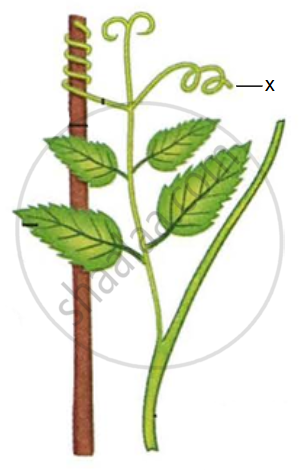Advertisements
Advertisements
Question
The root of a plant is :
(i) positively phototropic but negatively geotropic
(ii) positively geotropic but negatively phototropic
(iii) negatively phototropic but positively hydrotropic
(iv) negatively hydrotropic but positively phototropic
(a) (i) and (ii) (b) (ii) and (iii) (c) (iii) and (iv) (d) (i) and (
Solution
(b) (ii) and (iii)
The root of a plant is positively geotropic, negatively phototropic and positively hydrotropic.
APPEARS IN
RELATED QUESTIONS
What is a plant hormone? Name four plant hormones. State one function of each.
To which directional stimuli do roots respond?
To which directional stimuli do shoots respond?
A growing seedling is kept in a dark room. A burning candle is placed near it for a few days. The top part of seedling bends towards the burning candle. This is an example of :
(a) chemotropism
(b) hydrotropism
(c) phototropism
(d) geotropism
When the leaves of a sensitive plant are touched with a finger, they fold up and when light fades at dusk, the petals of a dandelion flower close.
State one way in which the above two processes are similar.
The solar tracking of sunflower in accordance with the path of sun is due to ______.
Match column A with column B.
| Column A | Column B |
| Roots growing downwards into soil. | Positive phototropism |
| Shoots growing towards the light. | Negative geotropism |
| Shoots growing upward. | Negative phototropism |
| Roots growing downwards away from light. | Positive geotropism |
What is the difference between movement of flower in sunflower plant and closing of the leaves in the Mimosa pudica?
Give an example of chemotropism.
Ali has some pea plants in his garden which need a support to grow as seen in the picture given below:

- Name the phenomenon depicted by the shoot in the given figure.
- Define the above phenomenon.
- Write the name of the part marked X.
